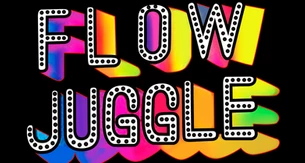FIRE FOTOGRAPHY 🔥 MADE SIMPLE - 8 STEPS
🤹📷1. Choose your camera: Select a camera that will work best for the type of shots you want to take. Consider factors such as image quality, shutter speed and other features that are important for capturing the dynamic lighting and movement of fire juggling and flow arts. Pixel phones, iPhones and Samsung phones are great if you want high-quality photos but do not require high levels of control over shutter speed, exposure etc., Insta360 cameras can capture immersive 360° images with independent settings for left and right lenses which gives additional control in tricky lighting situations.
2. Choose a lens: It is important to select a lens that complements the skillset you have when taking photos; telephoto lenses are better at zooming in on small details whereas wide angle lenses enable more sweeping shots with large field of views. Wide angle lenses tend to twist perspective on nearby objects, so try to use a mid range or telephoto lens if possible.
3. Set up lights: Focus some light towards the performer(s) who will be jugging or celebrating flow arts. This will help ensure good visibility when capturing moments with fast moving objects and enhance color modulation around the glowing trajectories made by the fire juggler’s spinning props. Use at least 1-2 fill light sources, pointing from different angles towards the performers from some distance away so that it doesn't negatively affect their movements due to excessive heat.
4. Balance your exposure: Set an appropriate ISO level for your camera (Defaults can be found in each device's instruction manual). Check white balance setting so that colors appropriately appear for your scene – Auto WB works great for most scenarios but manually adjusting it (or even shooting RAW/DNG files so you can adjust afterward) can yield more consistent results when daylight varies from frame to frame and during post processing .
5. Select shooting mode: Practice frames should preferably be taken using manual exposure settings where possible, controlling aperture size and shutter speeds which yield most effective results while practicing pictures one needs to shoot continuously while exposing properties of human reflexes (reaching peak speeds during performance), hence burst modes might also need consideration here depending on desired aesthetics or shot techniques employed by photography artist/shooter
6. Use Steady Shots: Even though jugglers continuously move while they perform it is important use stabilizing equipment such as tripod or monopod while clicking pictures.. As stated earlier good ballance between shutter speed & ISO , Picture style & Exposure settings would support keeping image clear/sharp without having any blurry effects visually ruining clicked image artifacts..
7 Compose your shot well: Whether photographing indoors or outdoors, always look out for interesting backdrops in your frame which adds depth information in the photo& adds up valuable creative aesthetic properties visible in clicked picture . Also , viewpoints like ground level & elevated points creates synergy among environment clicks along with creating sense of wonder amongst viewers gazing photograph..
8 Post Processing : HandleRAW files with due diligence & care , Enhance colors accordingly Play with Gray/Gradient Map tool for better visual response & outcome .. 8 Perform Bokeh Post Processing edits if needed ! Voilah! You’re All Done!
Recent Posts
See AllOn June 16, 1884, a revolution in entertainment began as LaMarcus Thompson unveiled America’s first roller coaster at Coney Island,...


























Comments